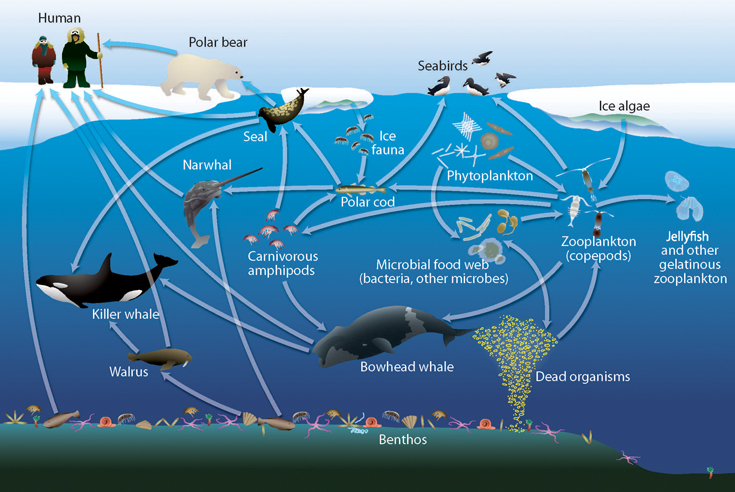Arctic Wildlife: Get to Know the Polar Cod

Join us as we dive into the chilly waters of the Arctic. Our blog series explores the magnificent (and often overlooked) species living in the Arctic—which you need to know! Read our other blogs from the series: brittle stars and Arctic copepods.
When most of us think of important Arctic marine species, we generally think of walrus, narwhal, seal, beluga and others. Although those species capture our imagination and are special to the Arctic, there are a number of lesser known species that may not have the same charisma but are equally, if not more, important for helping maintain the Arctic marine ecosystem. As a person who has always loved marine fishes, I’ve long thought polar cod (Boreogadus saida) are an exceptionally fascinating Arctic fish that just does not receive the attention it should.
Polar cod are one of the most abundant fish in the circumpolar Arctic, occurring in all corners of the region in sub-zero waters. They are able to thrive in such cold waters because they produce glycoproteins that serve as an antifreeze in their blood—an amazing evolutionary feat. Large schools of polar cod can sometimes feed so aggressively that they can cause local depletions of zooplankton populations. Polar cod are highly efficient in converting ingested prey into growth and become sexually mature within 2-3 years. Even though this is an incredibly short period of time, it allows them to get large enough to serve as a very important high energy food source for many large mammals in the Arctic (e.g., ringed seal (Pusa hispida), narwhal (Monodon monoceros), white whale (Delphinapterus leucas)) and seabirds (e.g., Brünnich’s guillemot (Uria lomvia), Black guillemot (Cepphus grylle), and Northern fulmar (Fulmarus glacialis)).
Polar cod can be found in a diverse range of Arctic habitats during different stages of life, including open and nearshore waters, shallow and deep waters, brackish lagoons, river mouths, and other habitats, and they are also the only fish species residing inside the Arctic ice pack! At one time polar cod were harvested in large numbers and converted to fishmeal and fish oil by countries such as the Russia, Norway, Germany and Denmark.
The pack-ice is an important habitat for polar cod during their first- and second-year of life, and it serves as a safe haven from marine mammals and sea birds that prey on them. The reproductive success of polar cod is also directly related to formation and break-up of seasonal polar ice. The dependence polar cod have on sea ice habitat is a double-edge sword. On one side they are well protected from predators and there are no other fish they compete with in those icy environments. On the flip side, the Arctic is warming twice as fast as the global average as a result from climate change and sea ice habitats are rapidly disappearing. The failure of sea ice formation will challenge the long-term survival of polar cod in the Arctic. Diminishing sea ice habitats will negatively impact polar cod reproduction and thus abundance, which will influence the distribution, abundance, and predator-prey interactions of other species that rely on them. As water temperature warms in the Arctic, sub-Arctic species will expand their range northward and compete with polar cod. Competition with other sub-Arctic species may further complicate the long term survival of polar cod, and if they are locally or regionally extirpated, the Arctic food web and ecosystem as we know it today will change forever.
The ability for polar cod to evolve and thrive in such harsh, cold water environments and to serve as such an important prey source to so many charismatic Arctic fauna makes them an unbelievably important species that unfortunately does not receive ample global attention.
It’s my hope that the polar cod will finally receive the praise and attention that they so aptly deserve! After all—it’s thanks to the polar cod that the charismatic narwhals and ringed seals are able to survive.